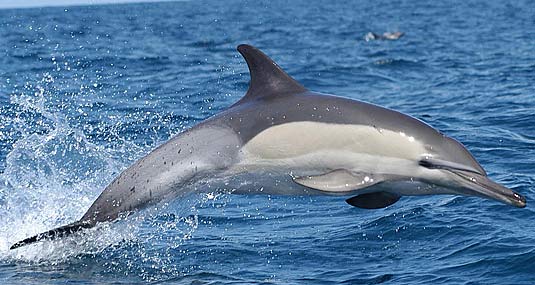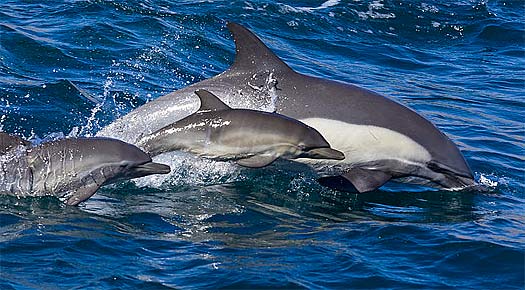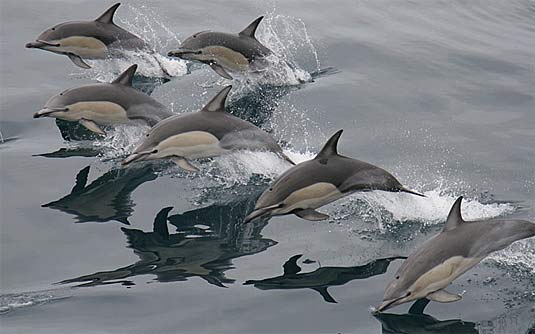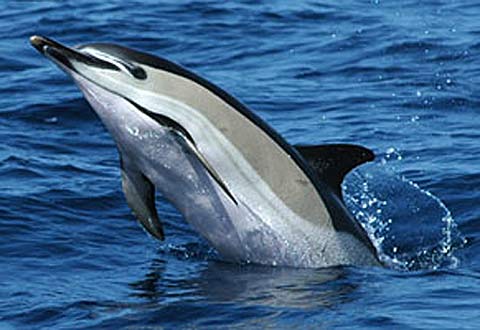Common Dolphin – Acrobatic Fish Hunter

The common dolphin is a very sporty water mammal, leaping in unison with other members of its group as they play at the bow of moving sea vessels. The dolphin, which has been divided into two separate species (and there may be a third species) based on the length of their beaks, is one of the most widespread and abundant dolphins in the world which lives in warm and temperate seas. It may not, however, be the common dolphin you are imagining, that is often seen in popular media (SeaWorld, Flipper). That would be the bottlenose dolphin, which is distinguishable by its more uniform, solid grey skin, while the common dolphin has a white belly and light grey to yellow stripes on the sides. The common dolphin is somewhat smaller than the bottlenose, in some cases a male may reach 8.5 feet (2.6 m) in length. The average weight is around 300 pounds (136 kg). Females are slightly smaller.


On the coasts of North America the common dolphin ranges from Oregon to Costa Rica on the Pacific side and from Newfoundland to the Caribbean on the Atlantic. They may gather in groups of several thousands for special dolphin events and sometimes even hang out with other dolphin species. They are fast swimmers and enjoy performing acrobatic maneuvers but they are not fond of being kept in captivity. They may feed off sardines, sauries, small bonito, squid, and a variety of other fish all in the same meal session. Several dolphins can drive their prey clear out of the water and then catch them in midair! Their teeth are small, sharp, and recurved, perfectly adapted for catching slippery fish. A United Nations report claims that these dolphins along the California coast eat 300,000 tons of anchovies each year. That is quite a stunning figure when commercial fishermen take only 110,000 tons per year. At nighttime they enjoy diving deep down in the ocean, down at least 850 feet (260 m), apparently searching for food at depths where there is mostly plankton and larger organisms.

